Sensor Sweep: Doc Savage, Gothic novels, Underwater, Appendix N
Monday , 27, January 2020 Sensor Sweep 4 CommentsHorror (Cemetery Dance): Up until the publication of The Monk in March of 1796, the Gothics mostly followed Walpole’s formula. The books usually featured a mystery or threat to the main character, an evil villain threatening the virtue of a virginal female, supernatural elements such as a ghost or an ancestral curse, and secret passages in crumbling mansions or castles. That template carried over into the next century, as evidenced by the bulk of the stories published in the pulps during the 1930s.
Cinema (cbr.com): MOVIE URBAN LEGEND: A Doc Savage movie was cast 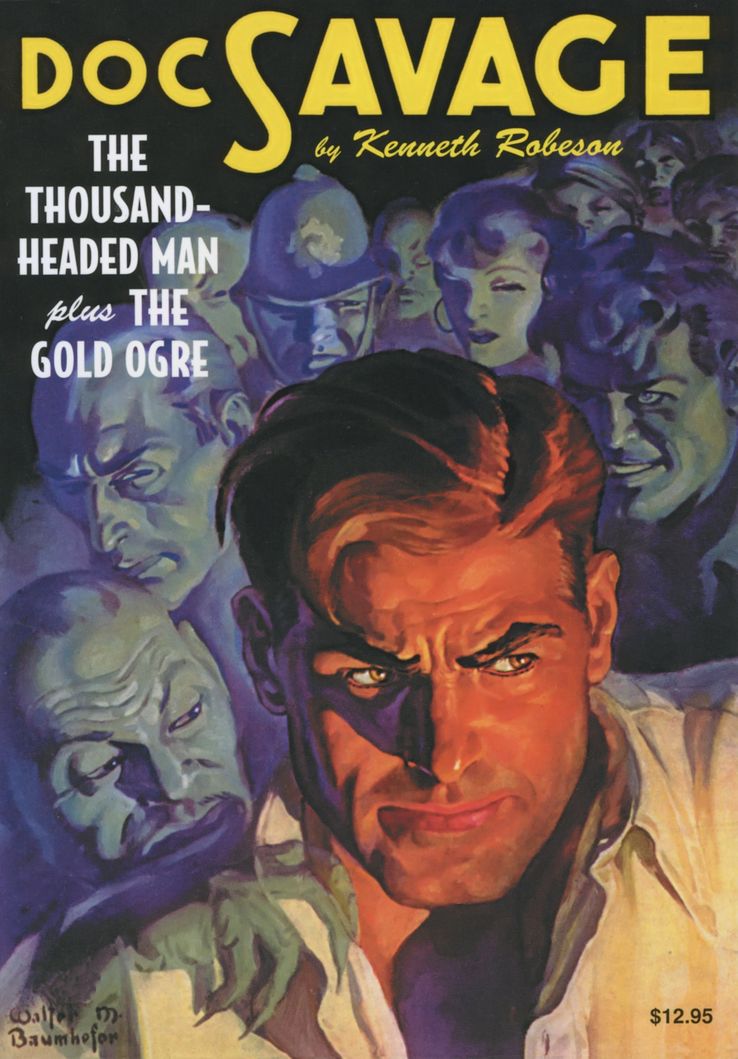 and ready to go when they abruptly changed to an entirely different film at the last minute. In the mid-1960s, the success of heroes from novels and comic books like James Bond and Batman led to producers looking to see whatever other 20th Century heroes that could be adapted into films. Producers Mark Goodson & Bill Todman (best known for their TV game shows) decided to pick Doc Savage to turn into a matinee idol.
and ready to go when they abruptly changed to an entirely different film at the last minute. In the mid-1960s, the success of heroes from novels and comic books like James Bond and Batman led to producers looking to see whatever other 20th Century heroes that could be adapted into films. Producers Mark Goodson & Bill Todman (best known for their TV game shows) decided to pick Doc Savage to turn into a matinee idol.
Westerns (Six Gun Justice): Gordon D. Shirreffs (1914 – 1996) started 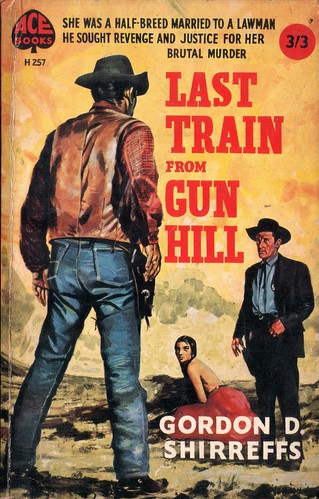 writing in 1945, after serving in World War in Alaska and the Aleutian Campaign. Coached by published boy’s adventure writer Frederick Nelson Litten at the Chicago campus of Northwestern University, Shirreffs broke into the young people’s market with pieces in Boy’s Life, Young Catholic Messenger and the later pulps like Dime Western, Ace High, and Six-gun Western. Experiences at Fort Bliss during the war served Shirreffs well in nailing down the gritty scenery of the Southwest, a setting that served him well throughout his career.
writing in 1945, after serving in World War in Alaska and the Aleutian Campaign. Coached by published boy’s adventure writer Frederick Nelson Litten at the Chicago campus of Northwestern University, Shirreffs broke into the young people’s market with pieces in Boy’s Life, Young Catholic Messenger and the later pulps like Dime Western, Ace High, and Six-gun Western. Experiences at Fort Bliss during the war served Shirreffs well in nailing down the gritty scenery of the Southwest, a setting that served him well throughout his career.
Cinema (Bloody Disgusting): While William Eubank‘s Underwater kicks off with immediate intensity, wasting no time plunging Kristen Stewart and the rest of the cast into the deep sea nightmare we bought a ticket to experience, it admittedly lags a bit around the middle, and unquestionably could’ve used a tad bit more monster mayhem to pick up the energy. The film’s monsters, with their massive gaping maws and spindly, Cloverfield-reminiscent legs, only actually kill one character in the entire movie, and for the most part we only catch glimpses of them in the darkness.
Science Fiction (Gizmodo): Futuristic militaries are a staple in science fiction. With their powered armor and laser guns, military science fiction novels are among the most exciting reads out there. Except for one problem. Most are not really about warfare. While military SF involves military personnel and technology, the cores of the stories tend to focus on elements other than warfare. Before I’m tracked down and shot for saying that, let me qualify that statement.
H. P. Lovecraft (The Mary Sue): When it comes to adapting the works of H.P. Lovecraft, it can be hard for some creators to decide whether they should ignore the racist politics that are embedded into the work, or address it head-on. As a Black fan of Lovecraft, I have long come to terms with the fact that he would dislike my existence, but still, find it endlessly frustrating when his “fans” insist on making excuses for his behavior.
Robert E. Howard (Black Gate): When I was around 12 in the basement of a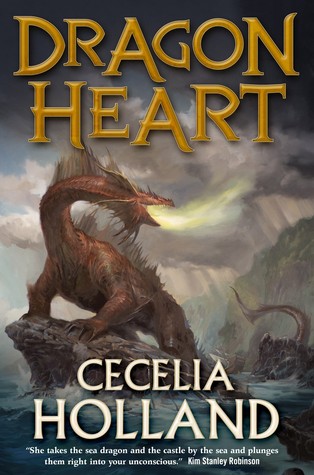 friend’s house, I found an old copy of Weird Tales (I’m not sure about the magazine, but it must have been a pulp) and read my first Conan story. I loved it; not just for the action—I was a big fan of action stories—but because Conan was a barbarian. He was outside the settled boundaries of propriety and decorum. He made himself up as he went along. He wasn’t a woman, but I was already so sunk into the abhorrence of womanhood that that actually worked in his favor. Conan was outlaw fiction. I knew my own path forward was to be an outlaw.
friend’s house, I found an old copy of Weird Tales (I’m not sure about the magazine, but it must have been a pulp) and read my first Conan story. I loved it; not just for the action—I was a big fan of action stories—but because Conan was a barbarian. He was outside the settled boundaries of propriety and decorum. He made himself up as he went along. He wasn’t a woman, but I was already so sunk into the abhorrence of womanhood that that actually worked in his favor. Conan was outlaw fiction. I knew my own path forward was to be an outlaw.
Appendix N (Goodman Games): John Anthony Bellairs was born on  January 17th, 1938 in Marshall, Michigan, which he described as “full of strange and enormous old houses, and the place must have worked on [his] imagination.” A shy and overweight child, he “would walk back and forth between [his] home and Catholic school and have medieval fantasies featuring [himself] as the hero.” He found refuge in books, excelling in college as an English major and even appearing on an episode of the TV quiz show G.E. College Bowl in 1959, where he recited the General Prologue to the Canterbury Tales in fluent Middle English.
January 17th, 1938 in Marshall, Michigan, which he described as “full of strange and enormous old houses, and the place must have worked on [his] imagination.” A shy and overweight child, he “would walk back and forth between [his] home and Catholic school and have medieval fantasies featuring [himself] as the hero.” He found refuge in books, excelling in college as an English major and even appearing on an episode of the TV quiz show G.E. College Bowl in 1959, where he recited the General Prologue to the Canterbury Tales in fluent Middle English.
D&D (Jon Mollison): It’s time to break the seals and talks bout why you 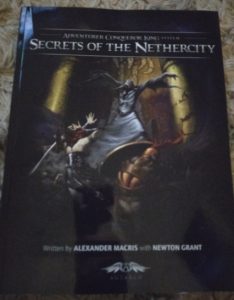 should run your D&D crew through Autarch’s Nethercity. But first we need to tuck all the sensitive and classified data behind the fold. Don’t click next unless you want to have the Secrets revealed through antiseptic blogging rather than rich play at the table.
should run your D&D crew through Autarch’s Nethercity. But first we need to tuck all the sensitive and classified data behind the fold. Don’t click next unless you want to have the Secrets revealed through antiseptic blogging rather than rich play at the table.
Biography (DMR Books): Well, Crom willing, I’m here to celebrate Robert E.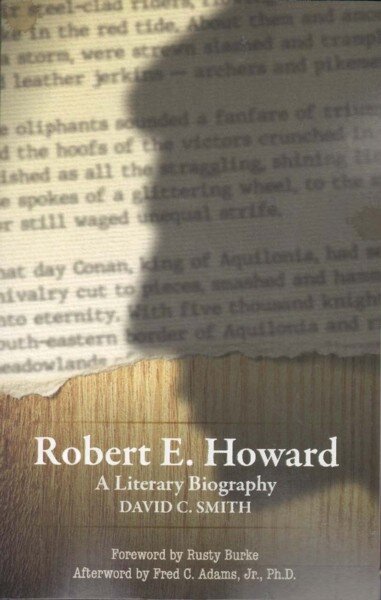 Howard’s birthday, despite the slings and arrows and technical glitches of outrageous fortune. I thought it would be fitting to review David C. Smith’s Robert E. Howard: A Literary Biography which came out just over a year ago. I’ve had several people ask me online about it and where it rates alongside the other two big REH bios. Let’s take a look.
Howard’s birthday, despite the slings and arrows and technical glitches of outrageous fortune. I thought it would be fitting to review David C. Smith’s Robert E. Howard: A Literary Biography which came out just over a year ago. I’ve had several people ask me online about it and where it rates alongside the other two big REH bios. Let’s take a look.
Blogging (Brain Leakage): Doing that forced me to create some regular columns, like my ‘Pocky-clypse Now reviews and my Kitbashing D&D series. Both of those proved to be popular, and have managed to get me some regular readers. Several posts of mine got shared in regular PulpRev and OSR gaming blog roundups, like Castalia House Sensor Sweep, The DMRtian Chronicles, and Jeffro’s Space Gaming Blog. Each time that happened, I’ve reached a wider audience and gained new readers.
Art (Dark Worlds Quarterly): When you do find something new, it is usually very new. But every once in a while you stumble upon something old that is new. Blue Book’s covers and interior art were such a delight. Here was a collection of Burroughs artwork that you just never see. Not in the old fanzines, not in the non-fiction books. It is almost like we all forgot they existed.
Fiction (DMR Books): Pulp magazines are just plain awesome. For readers 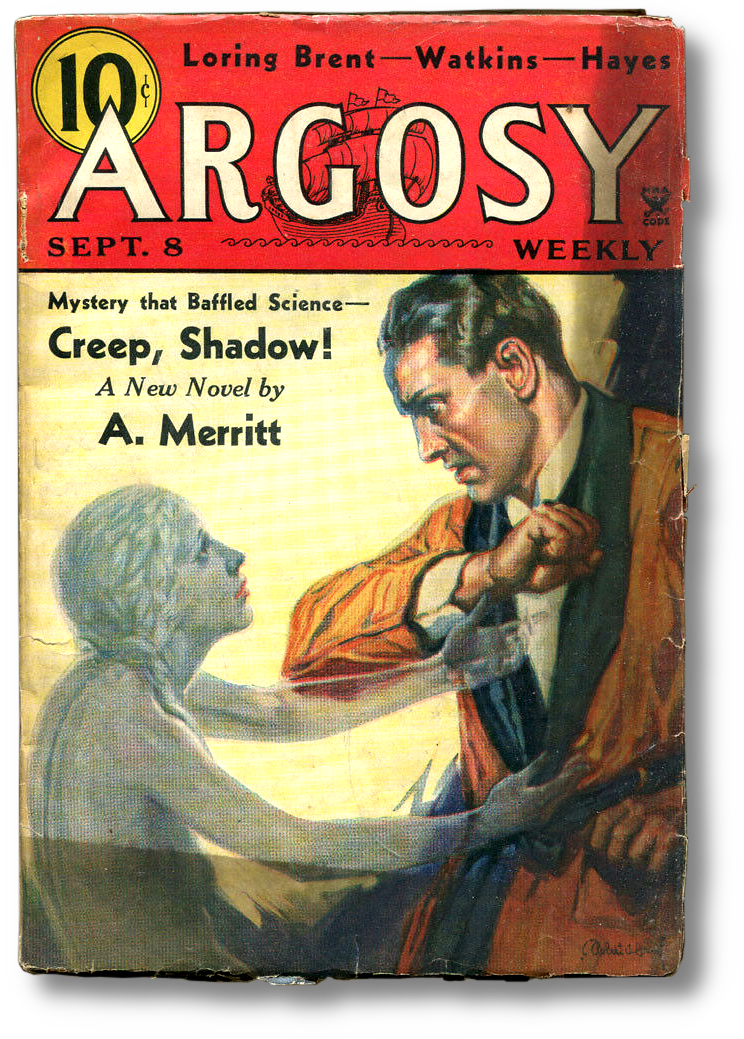 of old-time literature, they’re colorful time capsules of the nostalgic past that any time traveler would love to visit, and they’ve held a fascination for me since I learned of their existence. I couldn’t say how many times I’ve fantasized of stepping into a turn-of-the-century Five and Dime and plucking mint issues of Argosy and Weird Tales off the racks–imagine gazing on freshly printed copies of the February 1912 issue of The All-Story which contained the opening chapters of Edgar Rice Burroughs’s Under the Moons of Mars… holy freaking smokes!
of old-time literature, they’re colorful time capsules of the nostalgic past that any time traveler would love to visit, and they’ve held a fascination for me since I learned of their existence. I couldn’t say how many times I’ve fantasized of stepping into a turn-of-the-century Five and Dime and plucking mint issues of Argosy and Weird Tales off the racks–imagine gazing on freshly printed copies of the February 1912 issue of The All-Story which contained the opening chapters of Edgar Rice Burroughs’s Under the Moons of Mars… holy freaking smokes!
Robert E. Howard (Adventures Fantastic): I don’t know when “The House of Arabu” was written. It wasn’t published until 1952 in The Avon Fantasy Reader #18 under the title “The Witch From Hell’s Kitchen”. I like Howard’s original title much better. The story has been reprinted several times, but it isn’t as well known as much of Howard’s other sword and sorcery. I did notice that the version reprinted in The Ultimate Triumph had a slightly different closing line than the version in The Horror Stories of Robert E. Howard.
Tolkien (Tolkien and Fantasy): Christopher Tolkien has passed away in the  night of 15/16 January 2020 at the age of 95. These two men taught me more than I can express about the literary life and what it means to be, and how to go about being, a literary scholar. I became friends with Humphrey in the summer of 1978 when I attended a summer program in Oxford. A few years later Humphrey put me in touch with Christopher. Though I had some excellent and helpful teachers in college, none of them affected me as profoundly, or as lastingly, as did these friendships with Humphrey and Christopher.
night of 15/16 January 2020 at the age of 95. These two men taught me more than I can express about the literary life and what it means to be, and how to go about being, a literary scholar. I became friends with Humphrey in the summer of 1978 when I attended a summer program in Oxford. A few years later Humphrey put me in touch with Christopher. Though I had some excellent and helpful teachers in college, none of them affected me as profoundly, or as lastingly, as did these friendships with Humphrey and Christopher.
Leigh Brackett (Wasteland & Sky): As an example, I just finished reading Leigh Brackett’s Last Call from Sector 9G and had some thoughts about it. For one, the story was written in 1955 and it doesn’t quite feel like it. The era was full of misery and strife in her field, and yet she produced this gem in Planet Stories that could have just as easily come out of Weird Tales in 1929. It has a more timeless feel.
Fiction (Frontier Partisans): I woke up this morning thinking about old-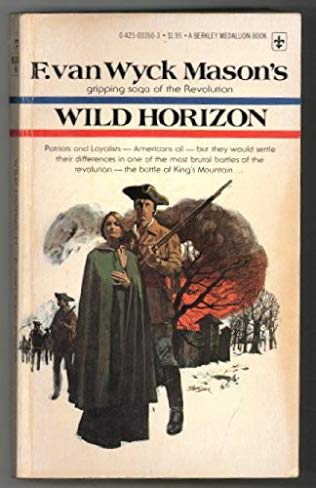 school historical potboilers. Yeah, I know. But you all know by now that my mind functions this way…Actually, there’s a straightforward explanation for why I roused from my slumbers with visions of F. van Wyck Mason dancing through my head. I hit the pillow after scrolling through a Kindle series of novels set during the French & Indian War.
school historical potboilers. Yeah, I know. But you all know by now that my mind functions this way…Actually, there’s a straightforward explanation for why I roused from my slumbers with visions of F. van Wyck Mason dancing through my head. I hit the pillow after scrolling through a Kindle series of novels set during the French & Indian War.
Pulp/Cinema (Don Herron): I didn’t have anything particular in mind, but then pulp expert John Locke jumped into the fray. “One of my sub-hobbies is spotting pulp mags in movies,” John just wrote to inform me. “My latest is a doozie. “It shows a Navy man reading a Fight Stories. “Better yet, the issue has a Sailor Steve Costigan story by Howard.
Writing (Emperor Ponders): Well, sure, but before my mind was even able to process that, what struck me the most was how uncomfortably written the entire thing is (or, at least, the first paragraph.) And I don’t mean typos, grammar errors, and such, but something that is deeper and harder to explain but is quintaessentially modern.
Gaming (R’lyeh Reviews): Conan the Barbarian is a supplement for Robert E. Howard’s Conan: Adventures in an Age Undreamed Of published by Modiphius Entertainment. It is the first in the ‘Conan the…’ series of supplements which focus on and take their inspiration from Conan himself at various stages of his life and what he was doing. Over this series, the supplements will track our titular character’s growth and progress as he gains in skills and abilities and talents. Thus this first supplement looks at Conan as a young man and his life among the people of his homeland, at the beginning of his career which will take him from barbarian to king, essentially the equivalent of a starting player character.
Hi Morgan. Nice to see the piece on Bellairs included in your “sweep.” I note that it repeats what everyone else on Bellairs always says, that his manuscript short story on how Prospero and Bacon met is “lost.” It seem not to be so. In the Lin Carter papers archived at the David M. Rubenstein Rare Book and Manuscript Library at Duke University, Durham, North Carolina, there is an item called “Bellairs manuscript: The Two Magicians, 1971.” Don’t know how Duke got the papers, but they’ve twelve linear feet of Carter’s stuff, in as many boxes. The Bellairs ms. is in Box 10.
-
I believe Wildside Press donated all that Carter material to Duke.
Lovecraftian fiction has been taken over by the Cthulhu cult.
Thanks for the link!